Thistles and not thistles
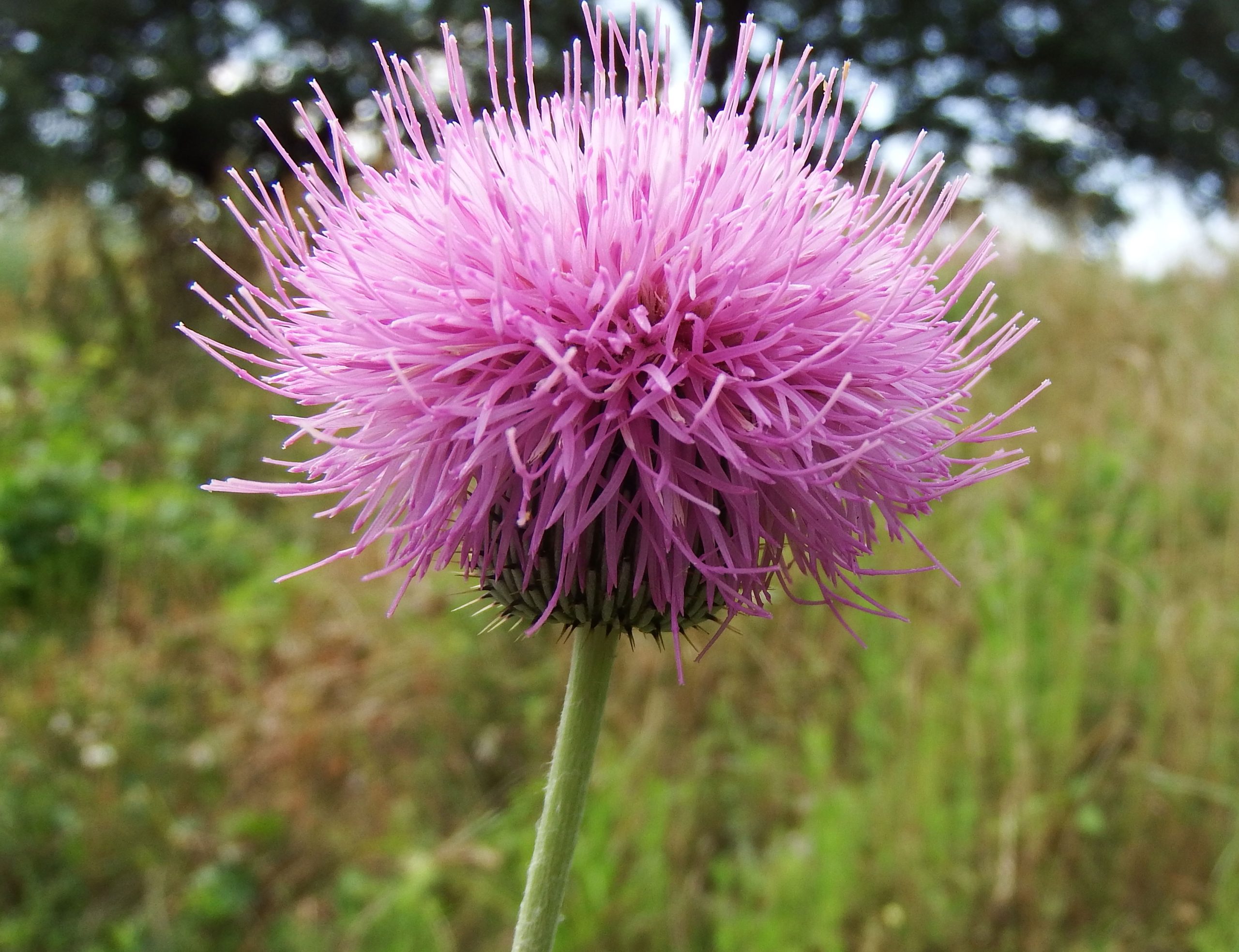
Thistles are in the same family as sunflowers, asteraceae. There is something both unexpected and fitting in this. People who know almost nothing of flowers would, I imagine, have the best chance of identifying three flowers: roses, sunflowers and thistles. Each of these flowers are so particular and unlike other flowers that we almost always recognize them. It’s one of those tricks nature likes to play on us, to have two things deeply related and vastly dissimilar.
Thistles almost always have spines. Spines and thistles go together so obviously that other plants with spines have come to be called “thistles,” but they aren’t really related to true thistles. There aren’t that may true thistles. An artichoke is one (you are eating the flower). You can tell a true thistle, because it will have only disc flowers and no ray flowers. This sounds, at first, like completely useless information, because you don’t know what a disc flower or a ray flower is. But you do, it’s just that no one ever shared the names.
Most of the flowers in the family asteraceae are compound flowers. If I asked you to draw a flower, you would draw a compound flower. You would draw a flower with petals around the rim and a big button in the middle, like a daisy. That’s a compound flower. The ray flowers are what you usually think of as a flower petals. The disc flowers are what make that center bump.*
Some flower petals have reproductive organs burried in them. Some do not. A dandelion is a flower that is composed of only of ray flowers. All disk flowers have reproductive organs.
This upright prairie coneflower (also known as Mexican hat) has drooping rays and a tall column of disc flowers. The disc flowers on the column open sequentially over weeks starting at the bottom of the column. You can see that this one has almost all the disc flowers open.
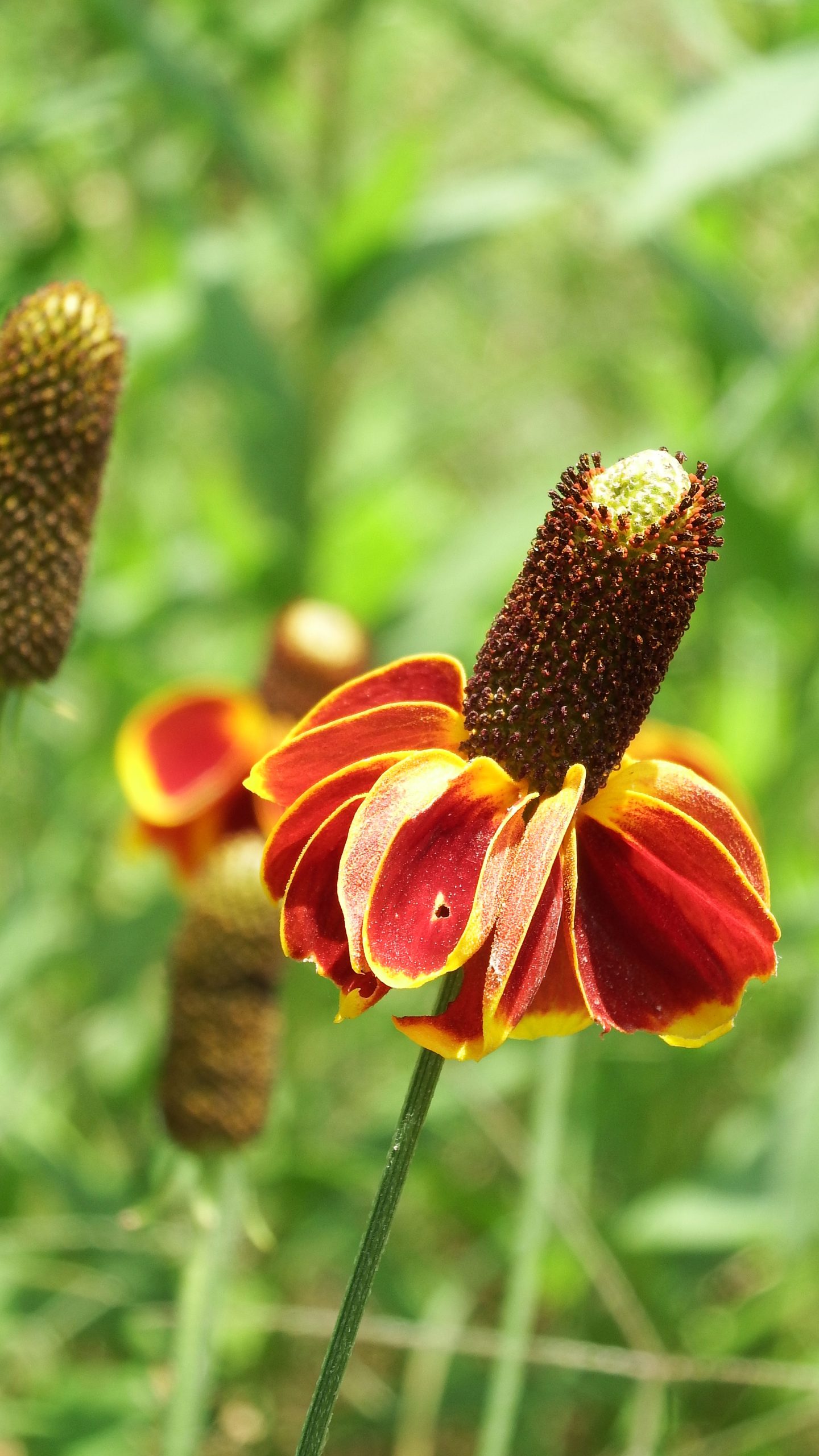
Each one of those tiny brown protuberances on the center column is a disc flower.
The coneflower is dramatic because it has a tall column of disc flowers; less dramatic versions are more common. These black-eyed susans are more typical-looking compound flowers. The disc flowers are in the center “button,” the ray flowers are the petals.
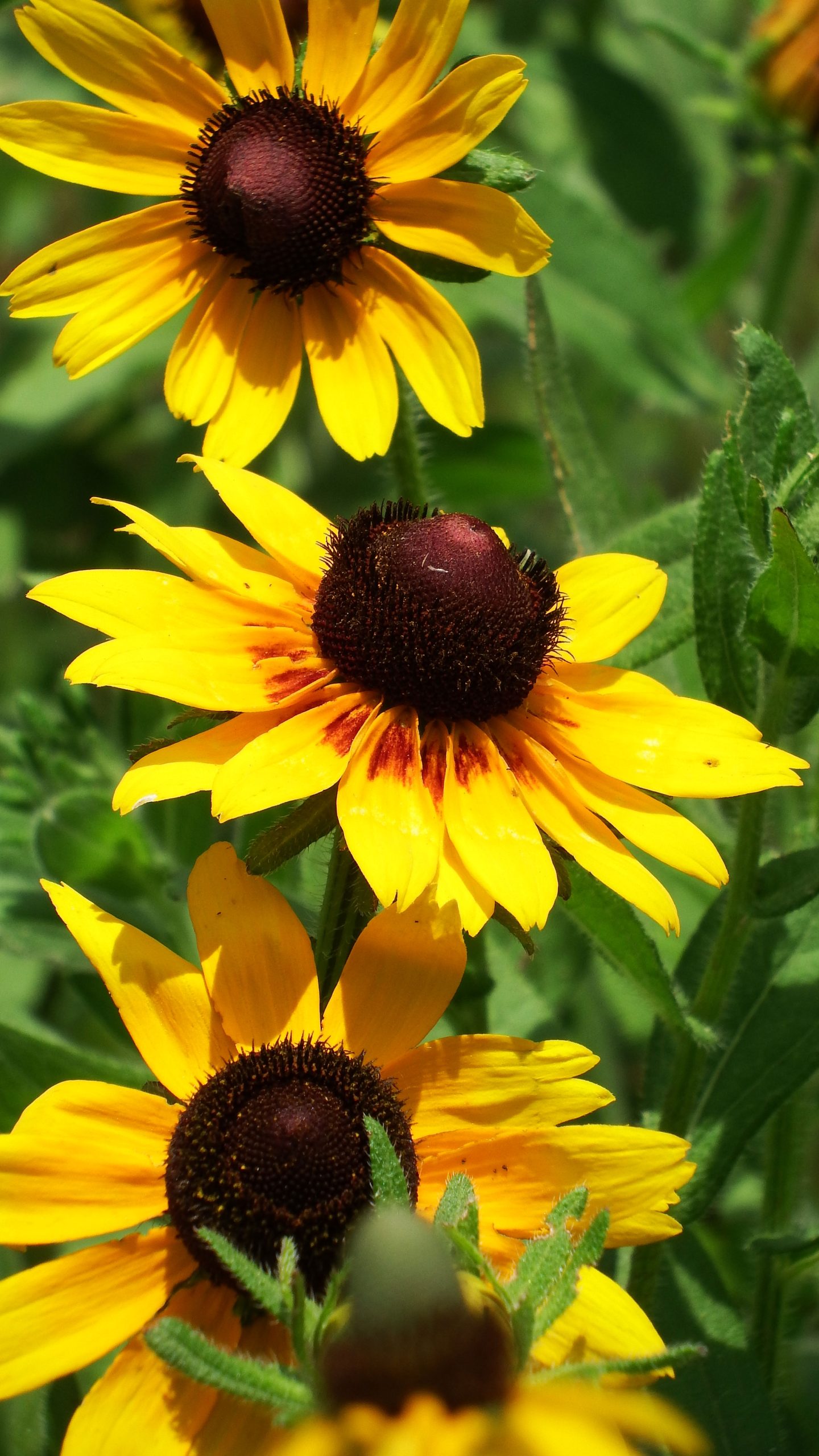
We don’t have many true thistles blooming in the Park. I found some a couple of weeks ago and have been looking for other thistles without luck. They are actually somewhat endangered and have a nasty reputation (those spines). But they are excellent sources of nectar and pollen.
Bumblebees love thistles. All bees love them, but particularly bumblebees. This is not intuitive. Thistles are made up of a multitude tiny, long-throated, dainty disc flowers. No one has ever thought of a bumblebee as dainty. But they do have very long tongues! Very few insects have tongues long enough to sip nectar from a thistle, so any bumblebee (or hawk moth) in the neighborhood is going to have that tasty liquid all to themselves.
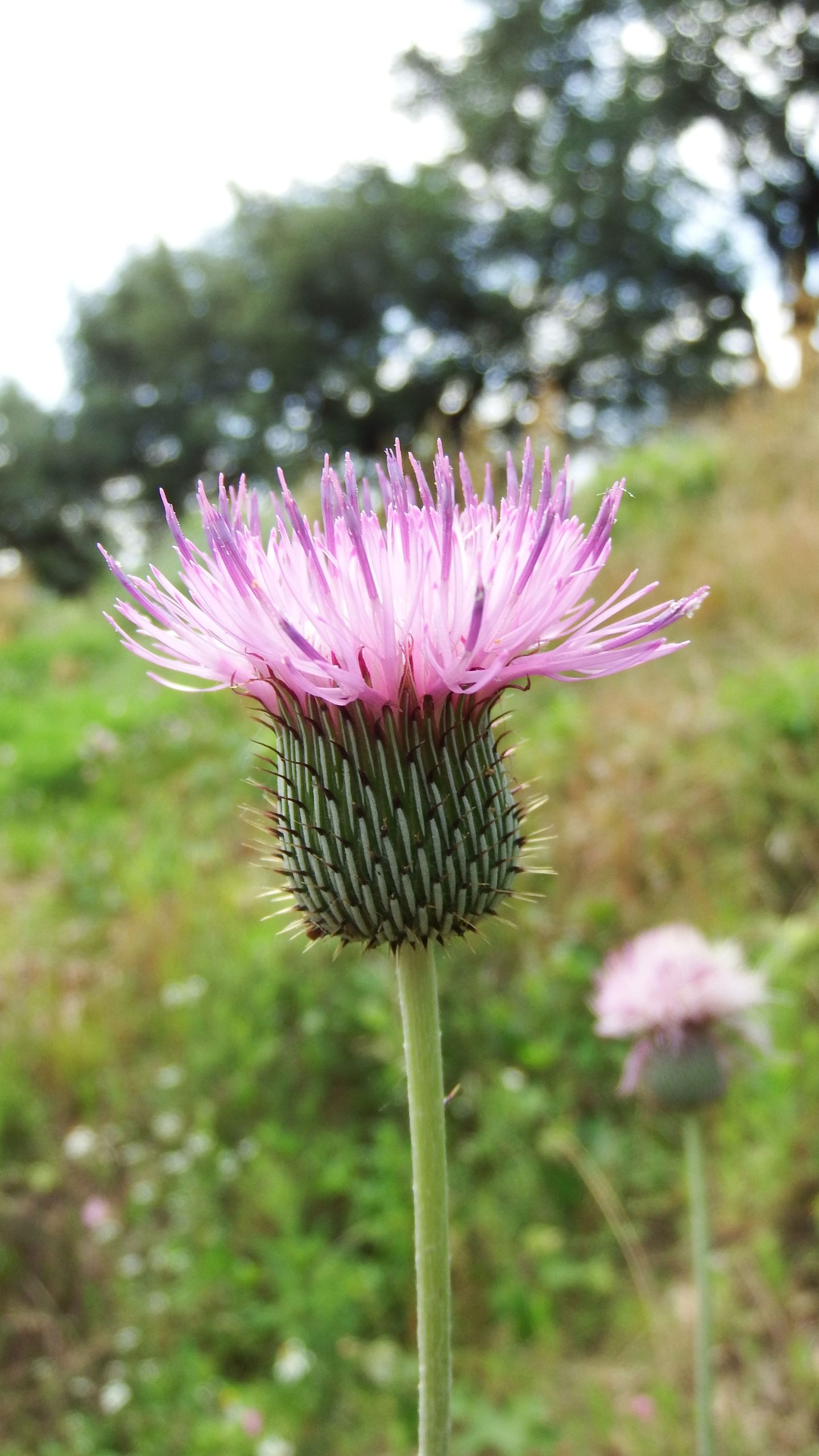
Imagine how long a bumblebee tongue must be to each the nectar at the base of each of the thistle’s disc flowers.
The other reason I’m focused on thistles is that we have a notable “not thistle” blooming in the Park right now and it is one of my favorite flowers. The American basketflower. The basketflower is also an all-disc flower affair. In fact, everything about it looks like a thistle. Except it’s not. It has no spines and whoever gets to determine these things has pronounced that the American basketflower is not a thistle.
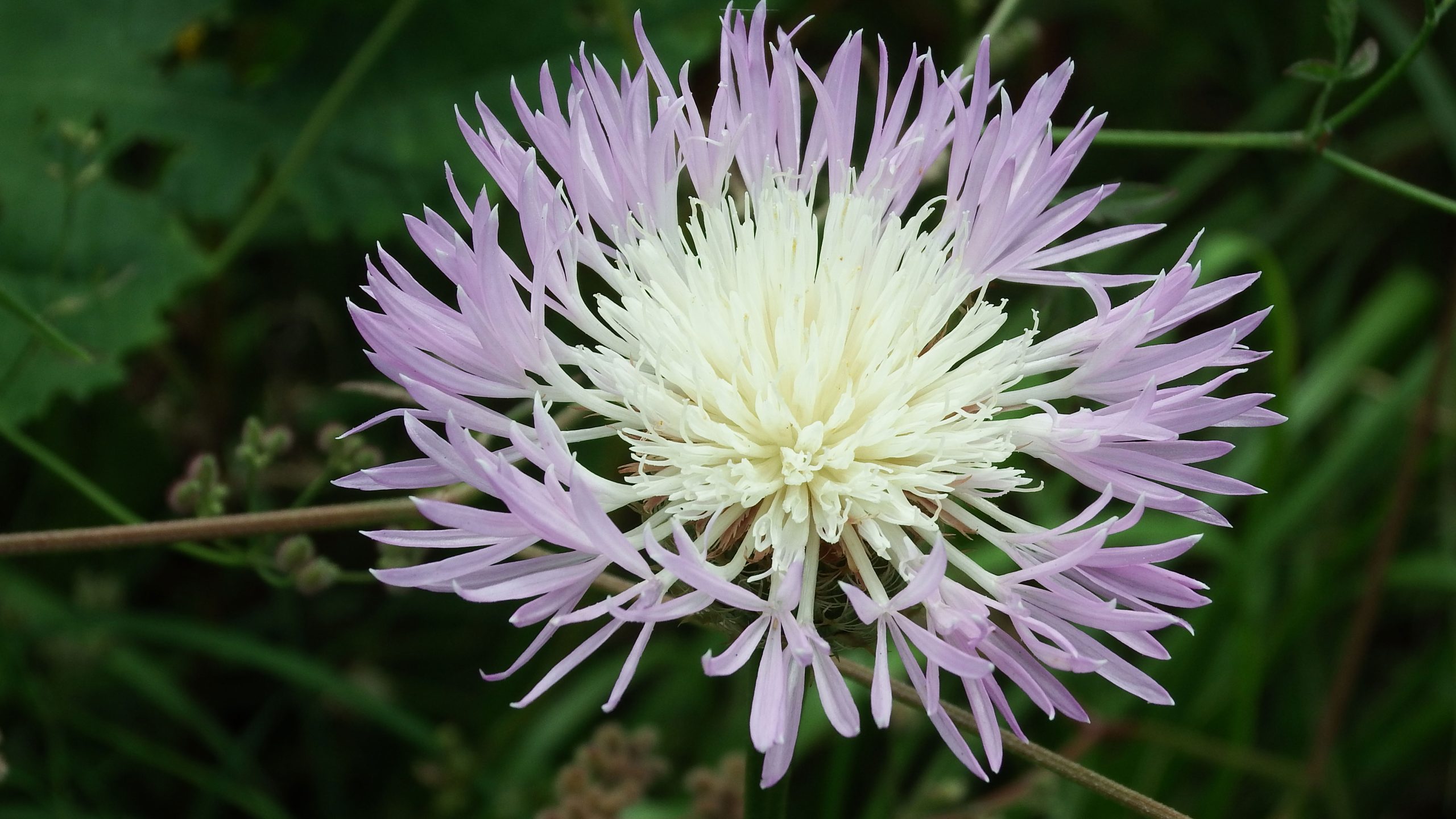
This is not a thistle. It is an American basketflower.
Before it blooms, the flower looks like a tiny clenched baby fist. It also looks a lot like a thistle (which it isn’t)!
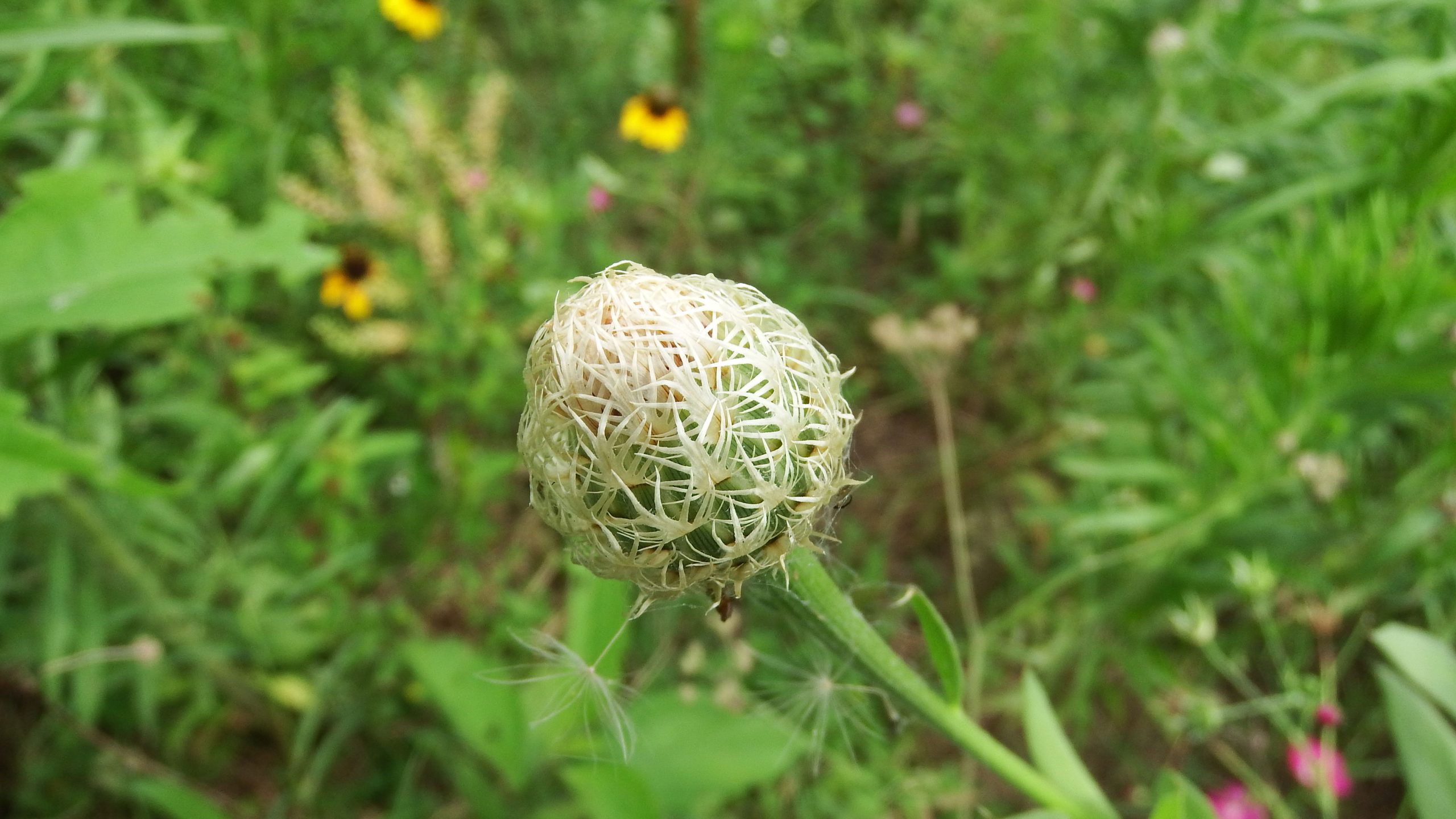
A basketflower before it opens.
Those filaments, once the flower open, remain below the bloom, looking as though the flower comes in its own basket.
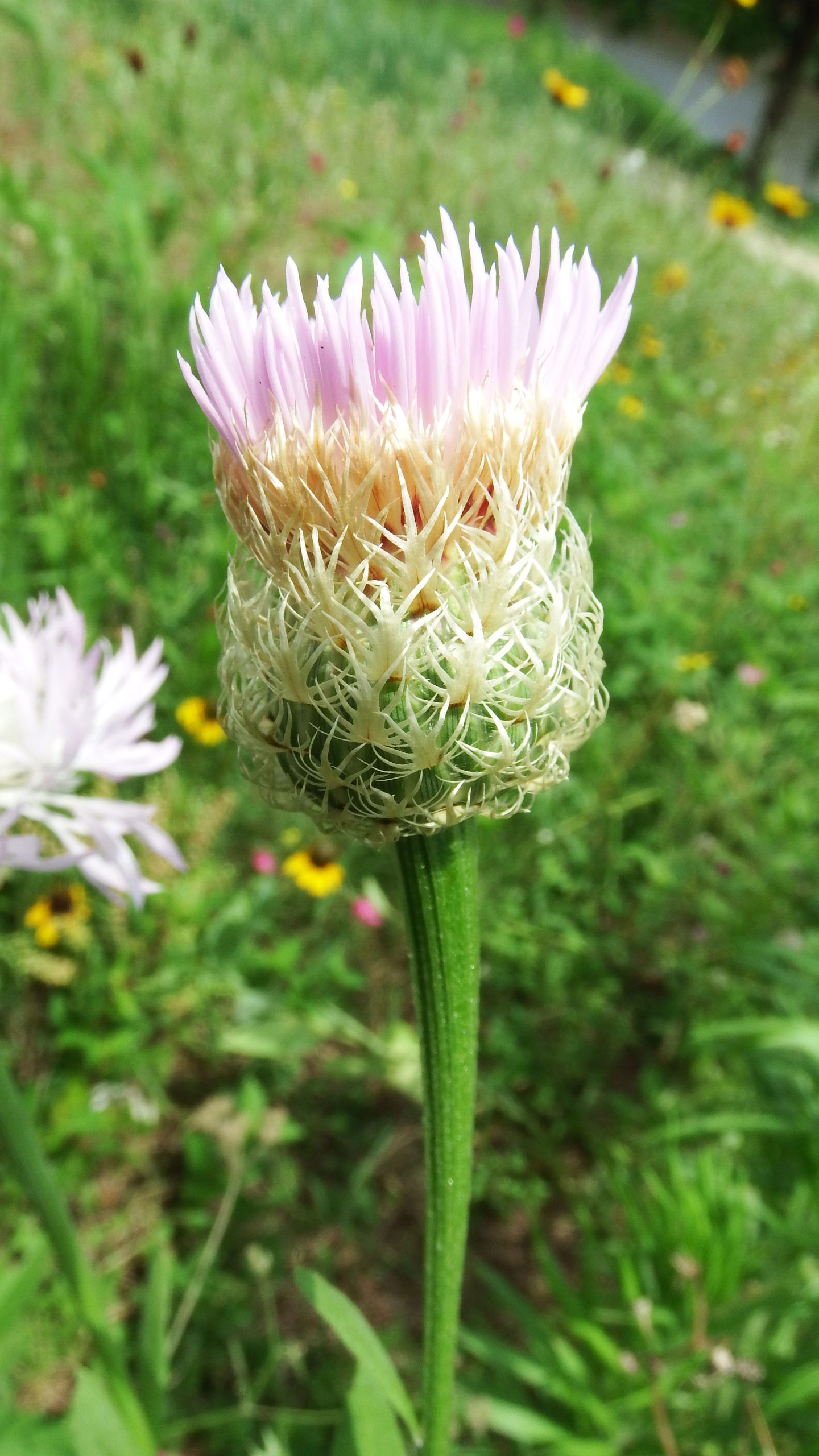
Half-open basketflower
One thing you might gather from this post is that the Park is full of wildflowers right now. I don’t think I’ve ever seen a spring to match it.
Our Park is part of an important prairie restoration project taking place across south Texas and Louisiana. Most of the prairie plantings were just getting started when Harvey dumped all that silt on the Park. It really set the project back, but prairies are very sturdy and very resilient. Also very, very beautiful.
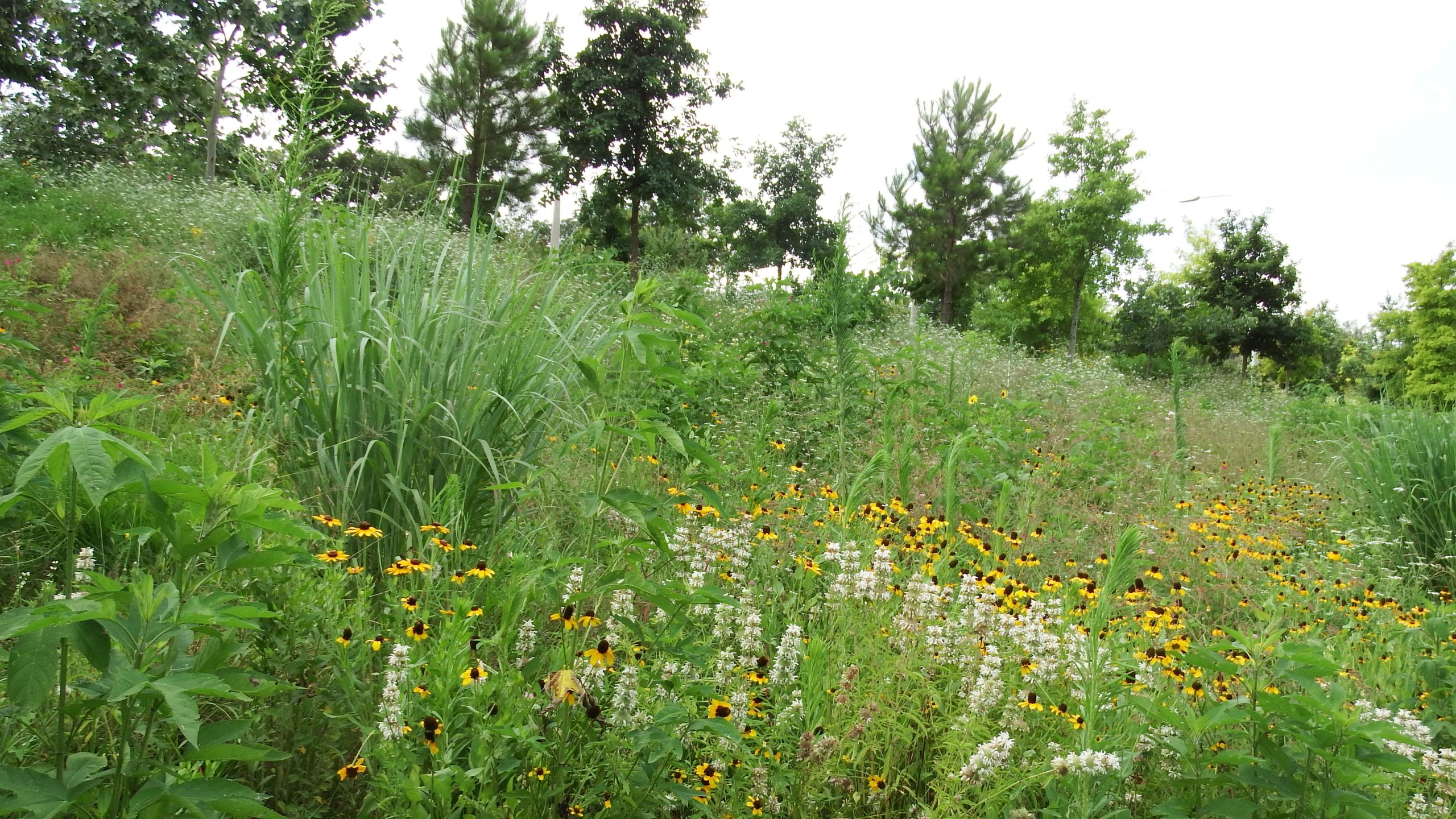
*Big thanks to my fellow master naturalist Jenn Drummond for helping me to understand the whole ray/disc flower issue.

